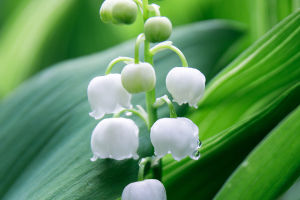In the familiar realm of nature, plants seem to grow as solitary, self-sufficient organisms.
However, recent research has revealed that plants are not solitary beings after all; they exhibit astonishing acts of cooperation. The collaboration between adult plants and seedlings is not only remarkable but also provides us with a deeper understanding of reciprocal relationships in ecosystems.
At first glance, plants may appear to be merely competing for sunlight, water, and nutrients to ensure their survival and reproduction. However, there exists a complex social network among plants, where they communicate through chemical signals and root systems, displaying signs of mutual assistance.
First, let's explore how adult plants help seedlings.
In some studies, scientists have found that adult plants can promote the growth of seedlings by releasing chemical substances.
These chemicals can influence the development of seedling roots, immune systems, and nutrient absorption capabilities, thereby enhancing the survival rate and growth speed of seedlings. For instance, some plants release specific compounds to inhibit the growth of neighboring competitive plants, thus providing seedlings with more resources and space.
Moreover, adult plants can also provide nutrient support to seedlings through the root system.
Within the root system, there exists a symbiotic relationship among plants known as "mycorrhizae." These mycorrhizal fungi help plants absorb nutrients from the soil, such as nitrogen, phosphorus, and potassium, and then transfer them to the plant's root system.
Through this mechanism, adult plants can offer additional nutritional support to seedlings, aiding them in survival and robust growth in competitive ecological environments.
However, this assistance is not unidirectional.
Seedlings can also reciprocate the assistance provided by adult plants
By releasing root exudates, seedlings attract beneficial microbes, thereby aiding adult plants in enhancing nutrient absorption capabilities and immune system functions. This cooperation not only enhances the survival ability of individual plants but also contributes positively to the stability and diversity of the entire ecosystem.
The mechanisms behind this mutual assistance among plants still require further investigation. Nevertheless, they have provided us with a fresh perspective, enabling us to better comprehend the reciprocal relationships within ecosystems.
Such cooperative behavior is not exclusive to the plant kingdom; it can also be observed in the animal kingdom and microbial world, showcasing the intricate and marvelous interactions among living organisms in the natural world.
In the face of increasingly severe ecological challenges, we can draw inspiration and insights from the cooperation among plants. By promoting collaboration and resource sharing, we can establish more robust and sustainable ecosystems, providing a better future for both humanity and the planet.
Therefore, let us collectively strive to protect and respect these miraculous acts of cooperation in nature, working together to create a more beautiful world.


